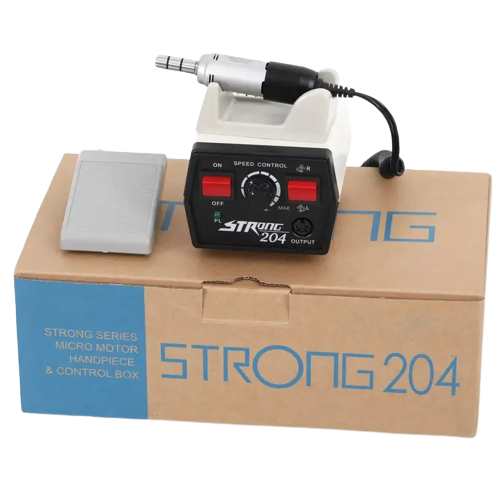Functions:
- Drilling: The primary use is drilling, to prepare teeth for fillings, crowns, or other restorations.
- Polishing: Dental micromotors can be used to polish teeth or restorations, providing a smooth finish.
- Prosthesis fabrication: Used in the making of dental prostheses like crowns, bridges, and dentures.
- Endodontic procedures: Used in root canal treatments to clean and shape the root canal space.
- Oral surgery: Useful for bone trimming or shaping during surgical procedures.
Features:
- Speed: Modern dental micromotors can achieve very high speeds, sometimes in excess of 400,000 revolutions per minute (RPM). However, some tasks require slower speeds, and many micromotors are adjustable to accommodate a variety of clinical needs.
- Torque: High torque is essential to ensure efficient cutting, especially when preparing hard tooth structures.
- Coolant system: Many micromotors have an integrated water spray system to cool the area being worked on, which helps reduce heat and prevent damage to the tooth.
- Reversibility: Some micromotors can reverse their rotation direction, which is essential for certain endodontic procedures.
- Ergonomic design: To reduce hand fatigue during long procedures and to enhance precision.
Types:
- Brushed: Traditional micromotors that use carbon brushes. They tend to be less expensive but may require more maintenance.
- Brushless: These are more modern and are preferred because of their efficiency, longer lifespan, and less required maintenance.




There are no reviews yet.